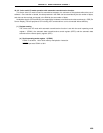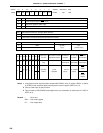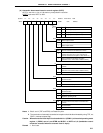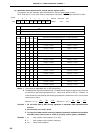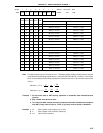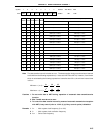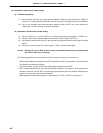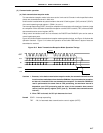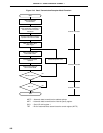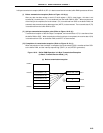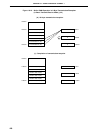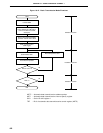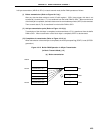
417
CHAPTER 18 SERIAL INTERFACE CHANNEL 1
(3) Communication operation
(a) Basic transmission/reception mode
This transmission/reception mode is the same as the 3-wire serial I/O mode in which specified number
of data are transmitted/received in 8-bit units.
Serial transfer is started when any data is written to the serial I/O shift register 1 (SIO1) while bit 7 (CSIE1)
of the serial operating mode register 1 (CSIM1) is set to 1.
The interrupt request flag (CSIIF1) is set upon completion of transmission of the last byte. However, judge
the completion of the automatic transmission/reception not with CSIIF1 but bit 3 (TRF) of the automatic
data transmit/receive control register (ADTC).
If busy control and strobe control are not executed, the P23/STB and P24/BUSY pins can be used as
normal input/output ports.
Figure 18-8 shows the basic transmission/reception mode operation timings, and Figure 18-9 shows the
operation flowchart. Figure 18-10 shows the operation of the buffer RAM when 6 bytes of data are
transmitted or received.
Figure 18-8. Basic Transmission/Reception Mode Operation Timings
Cautions 1. Because, in the basic transmission/reception mode, the automatic transmit/receive
function writes/reads data to/from the buffer RAM after 1-byte transmission/reception,
an interval is inserted till the next transmission/reception. As the buffer RAM write/
read is performed at the same time as CPU processing, the maximum interval is
dependent upon CPU processing and the value of the automatic data transmit/
receive interval specify register (ADTI) (see (5) "Automatic data transmit/receive
interval").
2. When TRF is cleared, the SO1 pin becomes low level.
Remark CSIIF1 : Interrupt request flag
TRF : Bit 3 of automatic data transmit/receive control register (ADTC)
SCK1
SO1 D7 D6 D5 D4 D3 D2 D1 D0 D7 D6 D5 D4 D3 D2 D1 D0
CSIIF1
TRF
SI1 D7 D6 D5 D4 D3 D2 D1 D0 D7 D6 D5 D4 D3 D2 D1 D0
Interval



